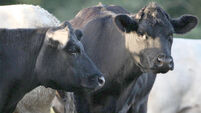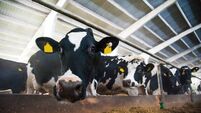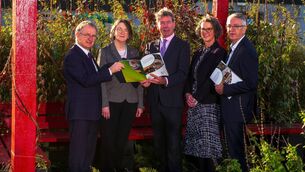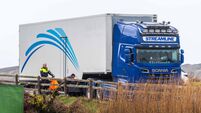Fishing hopes to cast a wider net
A public consultation process, which is subject to European Commission adoption, has been launched, with May 1 as the closing date for the receipt of comments.
The funding will assist seafood enterprises to sustainably grow their production, add value to seafood exports, and create much needed employment in coastal communities.
Currently the seafood sector is worth in the region of €850m annually to the economy, with exports growing by 70% since 2009 to €540m, with further potential in emerging markets like China.
It is widely recognised as a high-growth area, with the prospect of increasing turnover to €1bn by 2020. The new investment package will be a key element in achieving that growth.
The four main activities in the industry are covered by fishing, fish farming, processing, and marketing. They employ 11,000 people.
Killybegs, Castletownbere, Dingle, Dunmore East, and Kilmore Quay are the top fishing ports, but vessels also land catches at numerous smaller ports around the coast. Over 2,130 vessels operate in the industry which has 250 aquaculture operations and 180 seafood-processing companies which produce a wide range of high-value products. In addition, there is a significant number of artisan scale operations supplying dispersed local markets such as shops and restaurants.
According to the UN Food and Agricultural Organisation, the global demand for seafood is projected to grow by 42m tonnes per annum over the next decade. The major factors contributing to this growth are rising world population, rising spending power in Asia, and the preference in that region for seafood.
Bord Iascaigh Mhara says it is essential extra sources of raw material are sought to generate expanded levels of new and innovative value added products needed to capitalise on the emerging market opportunities.
It has five key strategic business plan objectives — adding value, increasing scale and competitiveness, sector growth, sustainability, and training.
Michael Keating, interim chief executive, told the Oireachtas joint committee on agriculture, food, and the marine last month that a growing demand for seafood in Asia may have a knock-on effect in traditional markets in Europe which are now almost 65% dependent on imports.
He said BIM is confident the combination of these factors is creating new business opportunities for the Irish seafood industry. In order to do so it needs large scale operators. A big proportion are currently small scale firms, with a turnover ranging from €3m to €10m.
This is in contrast to a typical European competitor which has a turnover in the order of €50m. Ireland’s geographical position on the periphery of Europe is compounding this lack of scale.
In reality this means it can be very difficult for Irish seafood companies supplying perishable produce to compete with much larger European counterparts in the marketplace. This is particularly relevant when dealing with buyers from large continental companies that require daily delivery arrangements.
Mr Keating said BIM will lead the sector in its efforts to build scale, create the necessary level of competitiveness, and realise its capacity to grow revenue and generate jobs.
The need for added value products is driven by younger generations of consumers who are demanding more convenience in product presentation and meal preparation. This is a feature of newly emerging markets in Asia and elsewhere, as well as in traditional European markets.
“A strong focus on maximising additional value will ensure the industry will be able to keep abreast of this trend and, ultimately, protect share and ensure long-term financial sustainability,” he said.
“The facilities at the Seafood Development Centre in Clonakilty will critically support this priority objective.”
Some of these issues, including effective scale in the industry and sustainable growth, will be addressed at a BIM leadership conference at Killashee House Hotel, Naas, Co Kildare, on May 13.
Meanwhile, the package announced by Mr Coveney is comprised of €147m which will be provided to Ireland under the European Maritime and Fisheries Fund, with the Government providing an extra €94m in co-funding.
He is proposing to invest €42m in implementing the new Common Fisheries Policy, including measures for developing more selective fishing gear, and supporting the new discards ban.
A further €6m to build on the good work that has been ongoing over recent months to revive and sustainably grow our inshore fisheries is also proposed.
Another €30m is earmarked to sustainably develop the aquaculture industry and implement a new national plan that is expected to be announced shortly.
It is proposed to invest €12m to grow the seafood-based economies of coastal communities through community-led Fisheries Local Action Groups.
The plans also propose to allocate €41m to grow markets for our seafood products, develop the seafood-processing industry, and develop new value added products for those markets.
Mr Coveney said that he is making available almost €10m to support implementation of EU environmental law, help protect vulnerable habitats and species, and ensure the seafood sector continues to operate and grow in a sustainable manner.










